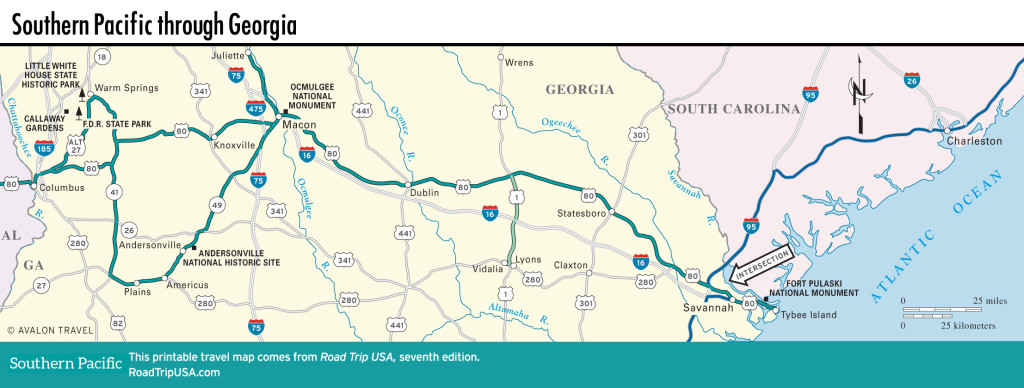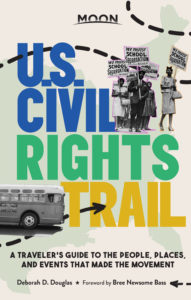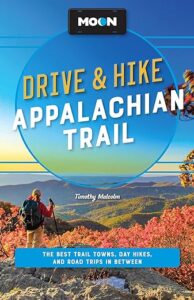Columbus
Crossing the Chattahoochee River between Alabama and Georgia, look north to see the rushing waterfalls around which the city of Columbus (pop. 194,160) grew. Built on the site of a Creek Native American village, Columbus (“Home of the 2006 Little League World Series Champions”) is now Georgia’s third-largest city and home of the brutal Army Ranger training school at Fort Benning. During the Civil War, its iron foundries and water-powered factories converted to munitions production, but Columbus was untouched until Union general James H. Wilson stormed across the Chattahoochee in 1865. Unaware that the treaty of Appomattox had already ended the war, “Wilson’s Raiders” destroyed much of the city. The huge brick textile mills now lining the river’s eastern bank date from the post-Reconstruction years up through the turn of the 20th century, when Columbus emerged as an industrial giant, an era captured in the stories of Columbus author Carson McCullers and in the recordings of blues singer Gertrude “Ma” Rainey. Her home has been preserved, and now houses The Gertrude “Ma” Rainey House and Blues Museum (805 5th Ave., 706/653-4960, Tues.-Sat.).
Most city sights are conveniently located in a compact riverside district. Stroll along the Riverwalk promenade for a close-up look at the river (or the kid-friendly science museum), or rumble down the cobblestone lanes of Broadway and Front Street past block after block of graceful old homes and fountain-studded parks. The elegant little Springer Opera House (103 E. 10th St.) is the highlight of the adjacent commercial district, where beautifully renovated buildings mix with funky shops selling wigs and voodoo trinkets.
On a hill east of downtown, a half mile from the river, the Columbus Museum (1251 Wynnton Rd., 706/748-2562, Tues.-Sun., free) is the major cultural center for the region, with engaging displays tracing the history of the river valley from the time of the Creek people. A wide-ranging collection of fine and folk art is on display in the spacious galleries. Overall, this is one of the state’s more captivating small museums, well worth an hour at least.
On the site of the former Confederate shipyard at Port Columbus, south of downtown at the foot of 4th Street, the National Civil War Naval Museum (1002 Victory Dr., 706/327-9798, daily, $8) contains the charred remnants of two Civil War ironclad ships, mock-ups of early submarines and mines, and tons of naval memorabilia.
Where to Eat and Stay in Columbus
At either end of historic downtown, restaurants span the range from down-home to upper-crust. Country’s on Broad (1329 Broadway, 706/596-8910) serves up classic country cookin’ and fabulous hickory-smoked barbecue in a spruced-up 1930s bus depot, complete with an old bus used as a dining area. A step or two down the street and up the style scales is The Loft (1032 Broadway, 706/596-8141), a lively bistro with good food and west Georgia’s best range of music and comedy. For a midday treat, before or after a visit to the Columbus Museum, head east from downtown along old US-80 to the Dinglewood Pharmacy (1939 Wynnton Rd., 706/322-0616), for a Scrambled Dog, a hot dog buried under chili, onions, and Oysterette crackers.
Most of the national chains line up along the I-185 freeway, but the nicest place to stay in Columbus is the Marriott (800 Front Ave., 706/324-1800, $160 and up) downtown, impressively carved out of a former foundry. The former Iron Works next door has been converted into a convention center and performance space and is the site of the city’s major festival, the RiverFest, in late April or early May. Southeast from downtown, Victory Drive winds toward Fort Benning, passing most of Columbus’s budget accommodations.
Map of the Southern Pacific Route through Georgia

















